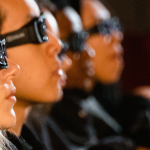Poor Creatures represents the inner child, a concept much talked about lately in psychology. Yorgos Lanthimos’ film, starring Emma Stone, reflects on how we would see the world as adults if we could look at it with the eyes of a child. To avoid spoilers, we won’t add anything more. Instead, let’s talk about the inner child.
What is it? Basically, it’s the psychological heritage of our childhood. We all carry inside us the child we have been, with all its emotional baggage. Since children have a “virgin” gaze and are more transparent than adults, psychologists consider the inner child as our true self.
As children we look at things and people around with no prejudice, in an innocent way. It’s all new, we’re curious and we can spot beauty everywhere. Then, as we get older, the inner child gradually falls asleep. While we experience the world, study and form opinions, we silence our inner child not to be disturbed. Or else we stop believing in it and maybe even feel ashamed.
Poor Creatures represents the inner child in its growth path as well. In the rush to become adults, we lose its positive qualities: creativity, enthusiasm, optimism, dreams. This is why psychologists suggest to reconnect with it.
Thus, we can learn to love and accept ourselves, to solve problems and fears. Indeed, many of these are the result of traumas we suffered during childhood or adolescence. With an appropriate path of psychotherapy, we can heal our inner child and live better in the present.




